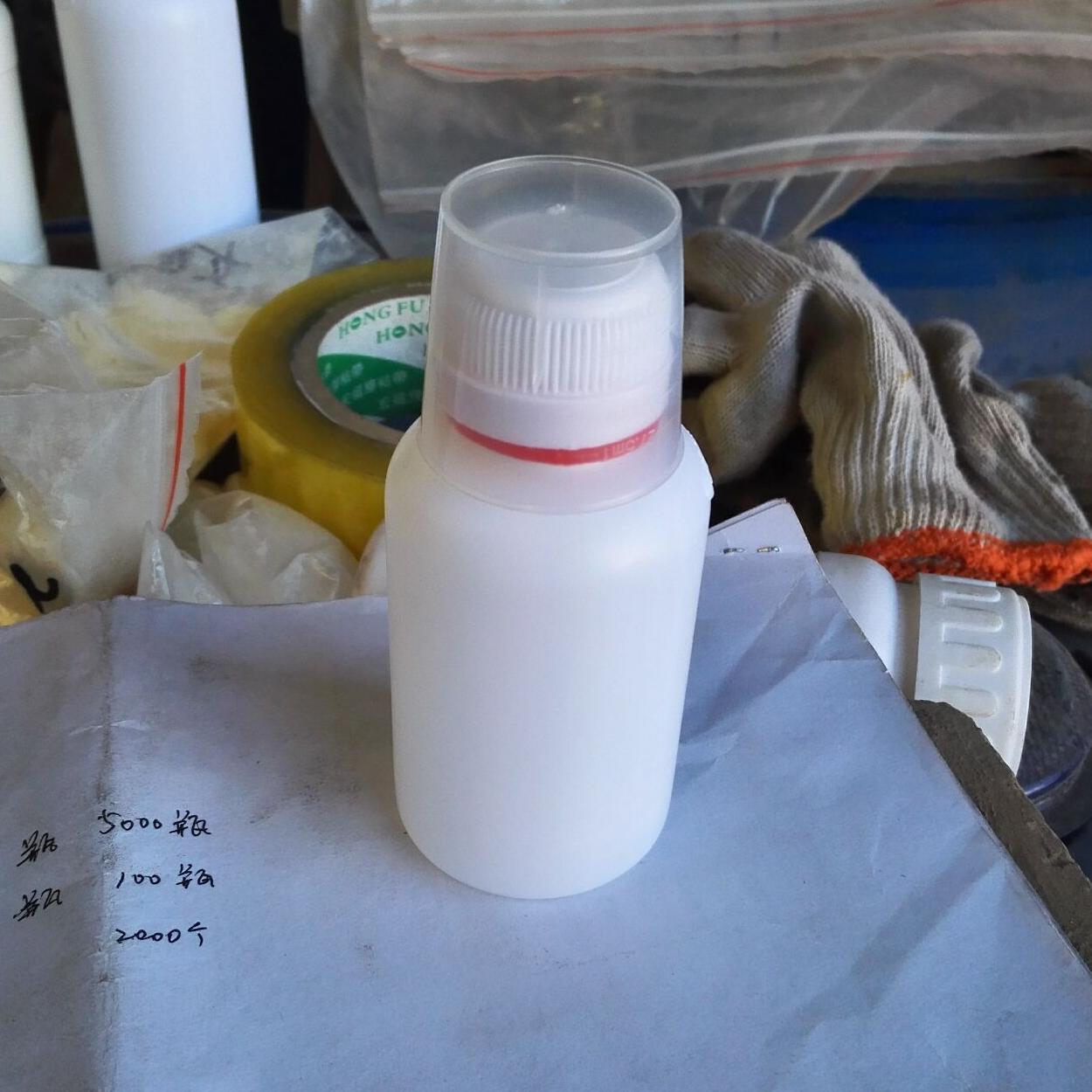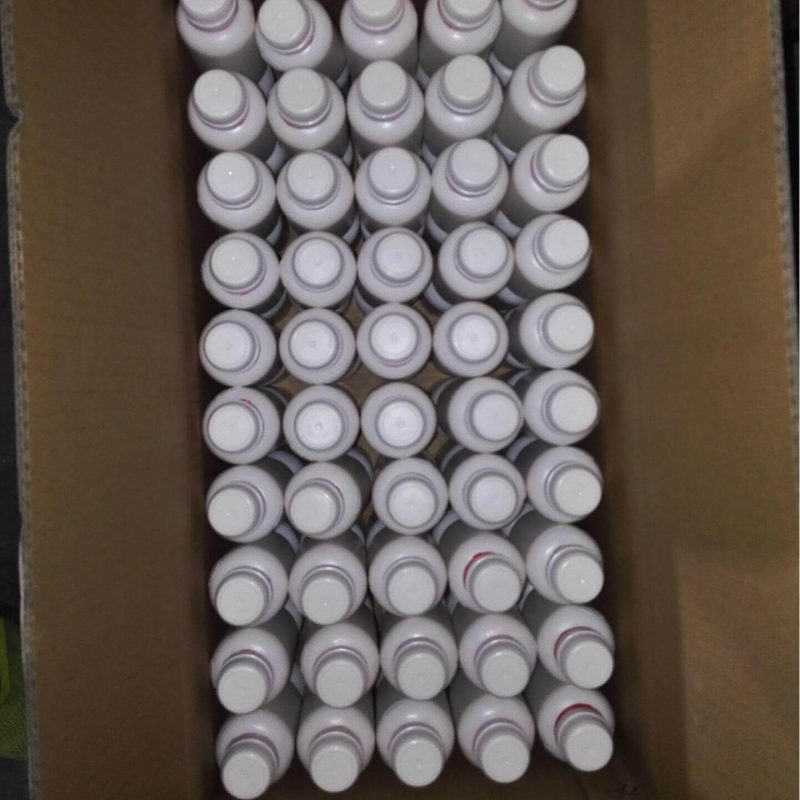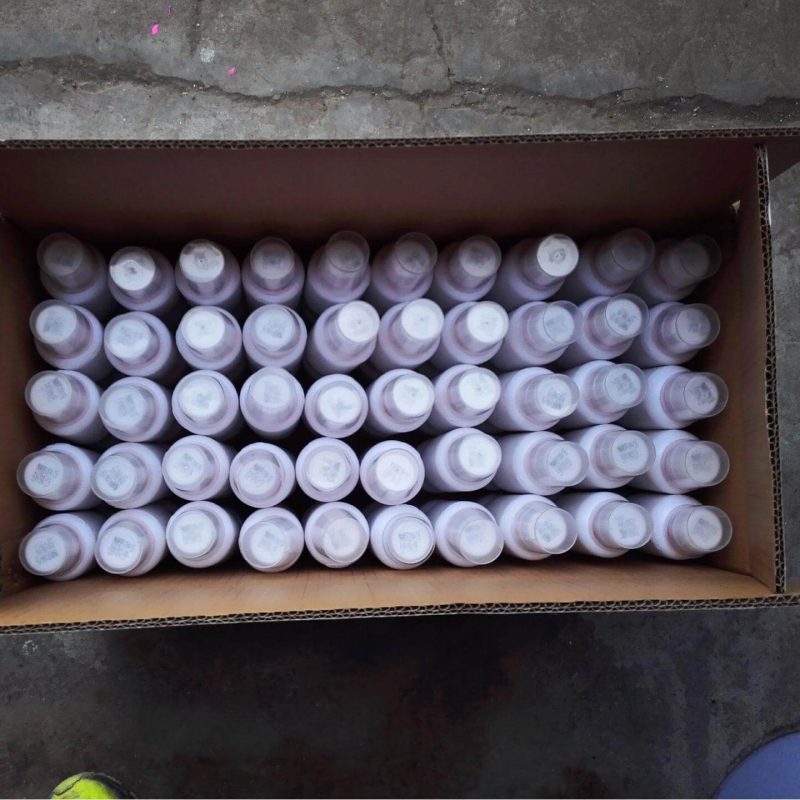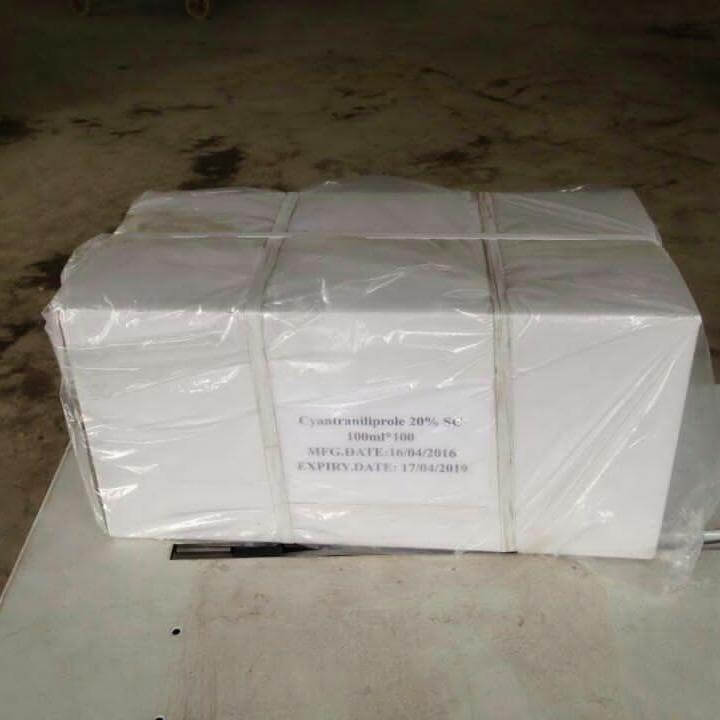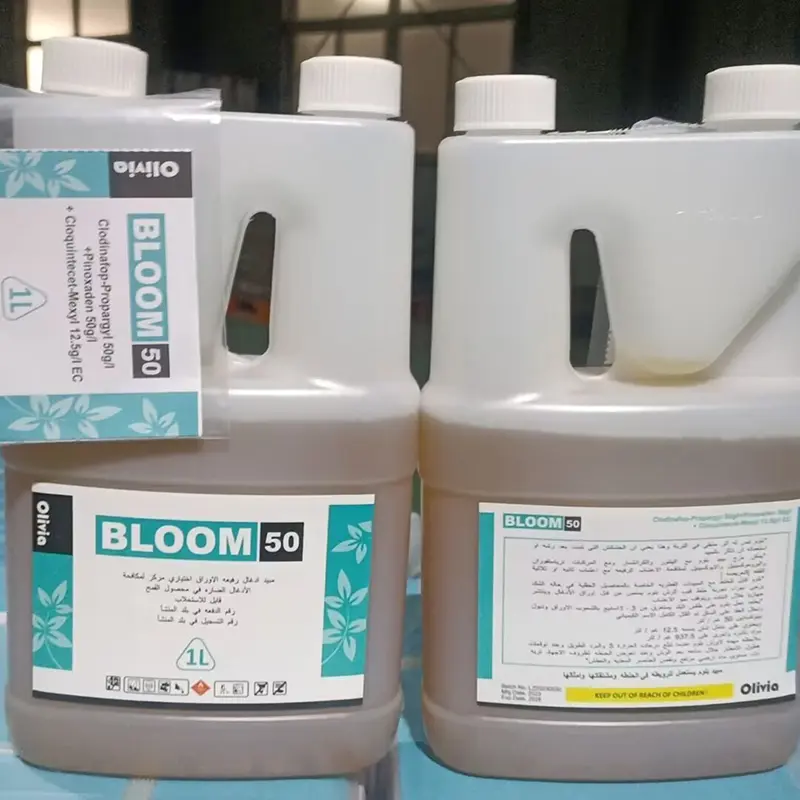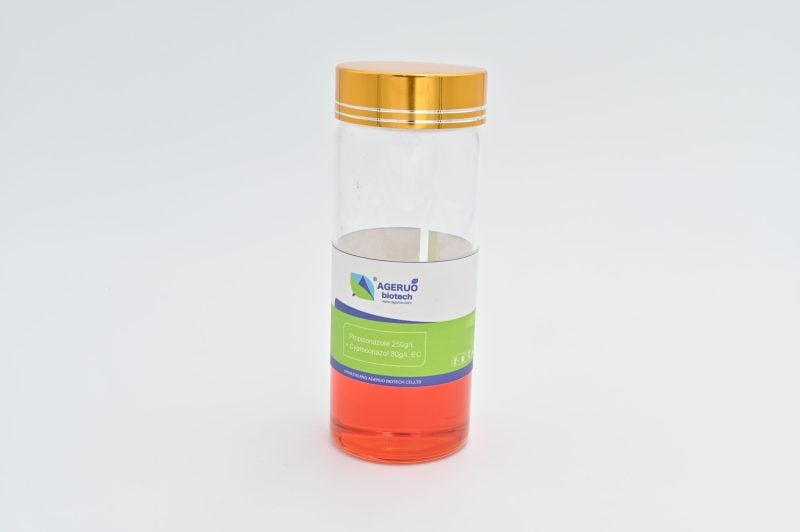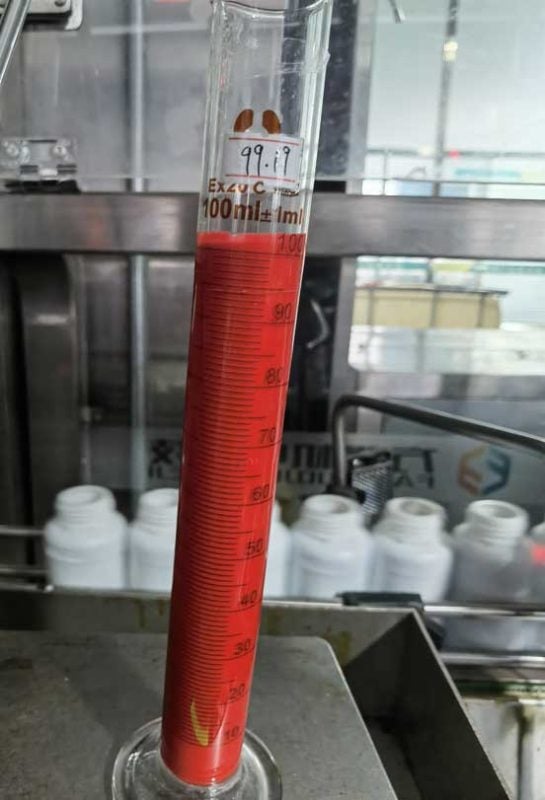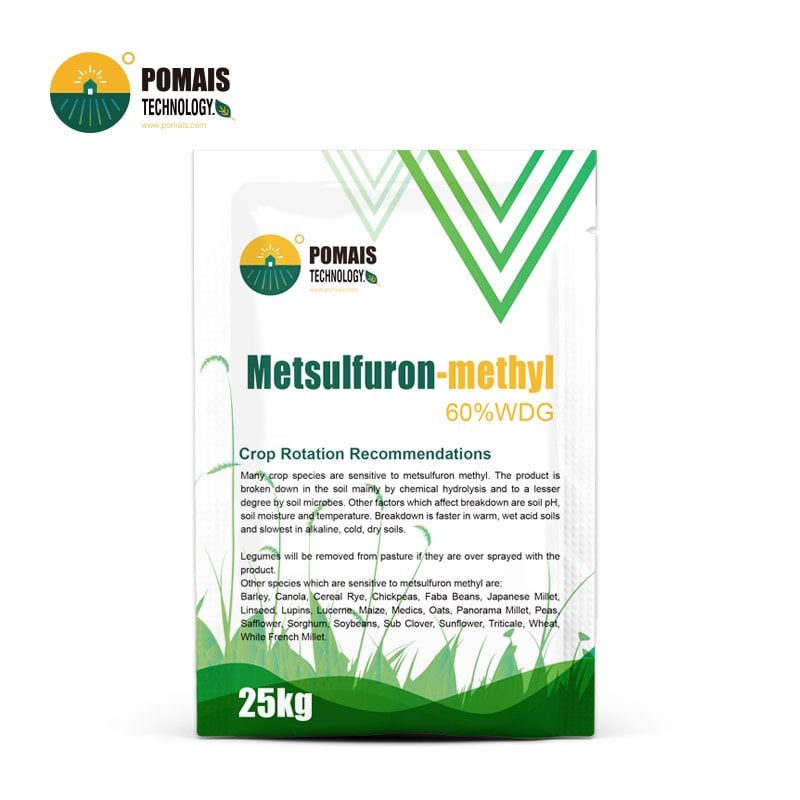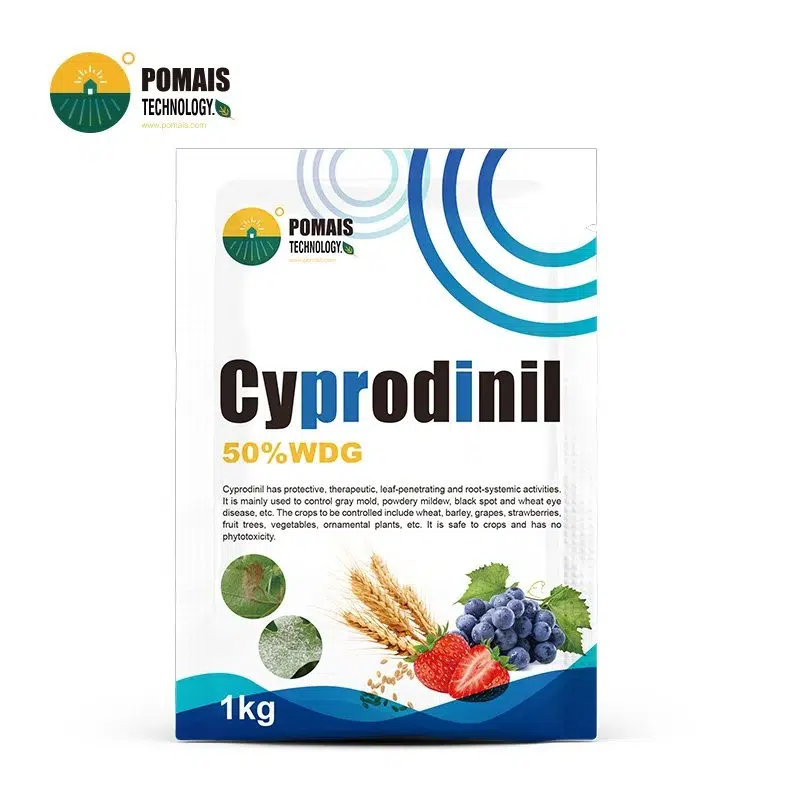Cyantraniliprole 10% SC Insecticide
Systemic Protection for Broad-Spectrum Pest Control
If you’re looking for a powerful, flexible insecticide that works from roots to canopy, Cyantraniliprole insecticide is your proven choice. Known for its strong systemic action, Cyantraniliprole moves within the plant, giving your growers reliable, long-lasting protection against lepidopteran pests, rootworms, and other damaging insects that regular sprays often miss.
Whether your market demands Cyantraniliprole 10.26 OD, foliar sprays, or seed treatment solutions like Cyantraniliprole Thiamethoxam 19.8 FS, our ISO-certified formulations deliver stable performance and cost-effective pest management. From rice and corn to vegetables and fruit orchards, you get flexible options to fit local resistance profiles — and your buyers get a product that works in real fields.
At POMAIS, we back your supply with OEM/private label packaging, multilingual registration support, and reliable bulk production — so you’re always ready to compete.
- Designed for Professional Buyers & Bulk Orders
- This product is available for business purchase and large-scale distribution.
- We support custom packaging, labeling, and formulation to meet your market needs.
- Let’s build your brand together.

About Cyantraniliprole 10% SC Insecticide
About Cyantraniliprole 10% SC Insecticide
| Name | Cyantraniliprole |
| CAS Number | 736994-63-1 |
| Molecular Formula | C17H14BrClF3N2O2 |
| Molecular Weight | 437.66 g/mol |
| Structure | Pyrazole-based insecticide with a chloro and trifluoromethyl group |
| Chemical Family | Anthranilic diamide |
| Synonyms | Cyantraniliprole, Rynaxypyr |
| Appearance | White to off-white crystalline solid |
| Density | 1.47 g/cm³ |
| Melting Point | 177-178°C |
| Boiling Point | Decomposes before boiling |
| Solubility | Slightly soluble in water, soluble in organic solvents like acetone and ethanol |
| Mode of Action | Cyantraniliprole acts by targeting ryanodine receptors in the insect’s muscle cells, leading to paralysis and death. It disrupts calcium ion regulation, ultimately affecting insect muscle contraction. |
| Target Pests | Lepidopteran pests (e.g., caterpillars, moths) and coleopteran pests (e.g., rootworms, weevils) |
| Applications | Used for insect control in crops such as rice, corn, soybeans, cotton, and vegetables |
| Formulation Types | 10.26% OD, 10% SC, 20% SC, 50 g/L SC, 35% WDG |
| Usage Rate | 50–100 g/ha for foliar spray; 200–400 ml/100 kg seed for seed treatment |
| Environmental Impact | Toxic to aquatic organisms and bees; low toxicity to mammals |
| Shelf Life | 2 years if stored in a cool, dry place |
| Storage Conditions | Store in a cool, dry place, away from direct sunlight and moisture |
| Safety Precautions | Use appropriate personal protective equipment (PPE) such as gloves and masks when handling. Avoid contamination of water sources. |
| Regulatory Status | Approved for use in many countries for the control of insect pests in agriculture and horticulture |
Cyantraniliprole Insecticide – Systemic Protection for Broad-Spectrum Pest Control
Cyantraniliprole is a next-generation insecticide from the anthranilic diamide family, designed for systemic protection across a wide range of crops. It offers a unique mode of action that disrupts the muscle function of target pests — resulting in rapid feeding cessation, paralysis, and death.
Unlike contact-only solutions, cyantraniliprole insecticide is absorbed by the plant and translocated through the xylem, offering systemic and translaminar coverage. This means your growers get deep-rooted protection from the seedling stage to full canopy, reducing the need for repeated foliar sprays and saving on labor.
Whether applied via foliar sprays, soil drench, or as seed treatment, cyantraniliprole products protect against a broad spectrum of pests including:
- Lepidopteran larvae (caterpillars, moths)
- Coleopteran pests (rootworms, weevils)
- Thrips, aphids, whiteflies, and leaf miners
Available in multiple optimized formulations — from Cyantraniliprole 10.26 OD for high rainfastness to Cyantraniliprole Thiamethoxam 19.8 FS for dual-action seed protection — you can adapt your offering based on crop type, pest pressure, and climate conditions.
With its long-lasting residual control and minimal impact on beneficial insects, cyantraniliprole fits perfectly into Integrated Pest Management (IPM) programs and helps your buyers meet sustainability and compliance standards in regulated markets.
Mode of Action
So what makes cyantraniliprole insecticide so reliable for tough pests that often survive ordinary sprays? It’s all about its precise mode of action on the insect’s muscle cells.
Cyantraniliprole belongs to the anthranilic diamide chemical family and works by activating the insect’s ryanodine receptors (RyRs) — critical channels that regulate calcium ion flow in muscle fibers. Once disrupted, the pest’s muscle contraction is thrown off balance, causing feeding to stop almost immediately. The insect becomes paralyzed and dies soon after.
Because cyantraniliprole systemic action distributes the active ingredient throughout the plant’s tissues, pests feeding on treated roots, stems, or leaves are exposed no matter where they hide. This deep reach helps control hidden pests like borers and rootworms that traditional contact insecticides often miss.
Another big advantage? Its unique target site means there’s minimal cross-resistance with older insecticides. Your buyers can confidently position cyantraniliprole products as an ideal rotation partner in resistance management programs — especially when paired with other modes of action like thiamethoxam or diafenthiuron for dual protection.
This targeted, reliable mode of action makes cyantraniliprole insecticide a smart choice for growers who want lasting control with fewer sprays and stronger crop protection all season long.
Target Pests & Typical Uses
When you supply cyantraniliprole insecticide, you’re giving your buyers a smart, broad-spectrum solution that fits multiple crop systems and pest pressures.
Primary Target Pests
Your growers can rely on cyantraniliprole products to control:
- Lepidopteran larvae: armyworms, cutworms, moth larvae, fruit borers
- Coleopteran pests: corn rootworms, weevils, leaf beetles
- Sucking pests: thrips, aphids, leaf miners, whiteflies (depending on local registration)
- Other hidden or soil-dwelling pests when used as cyantraniliprole seed treatment
Typical Uses & Crops
- Rice & Grains: Rootworms, stem borers, leaf folders
- Corn & Maize: Corn rootworm, armyworm, cutworms
- Vegetables: Tomatoes, cabbages, peppers for caterpillars, leaf miners, thrips
- Fruit Orchards: Grapes, apples, citrus fruits for moth larvae, fruit borers
- Seed Treatments: Early-stage protection for cereals and row crops, especially when combined with partners like thiamethoxam cyantraniliprole to broaden the spectrum
Practical Fit for Growers
- Systemic reach: Pests feeding inside stems, roots or deep canopy layers still get controlled.
- Flexible formulations: From foliar cyantraniliprole 10.26 OD for high rainfastness to cyantraniliprole 19.8 thiamethoxam 19.8 FS for dual-action seed treatments.
- Integrated programs: Easy to rotate or tank mix with other insecticides for resistance management.
When your buyers need a reliable answer for pests that survive surface sprays, cyantraniliprole systemic performance keeps crops protected from the inside out.
Recommended Dosage & Application
When you guide your buyers on how to apply cyantraniliprole insecticide, you help them deliver reliable results and avoid common mistakes that waste product and hurt performance.
Cyantraniliprole products can be applied in different ways, depending on the crop and pest pressure:
- Foliar Spray: For crops like rice, corn, vegetables, or orchards, foliar sprays work best when applied preventively or at early pest stages. Good canopy coverage and enough water volume ensure the active ingredient reaches hidden feeding sites.
- Seed Treatment: Using cyantraniliprole seed treatment or a mix like cyantraniliprole thiamethoxam gives seedlings systemic protection right from the start — a smart way to cut down early pest pressure and avoid rescue sprays later.
Growers should always check local bula or label guidelines, adjust dosage for pest severity, and respect pre-harvest intervals. And when tank mixing with other agrochemicals, a simple jar test first avoids incompatibility issues.
Example Dosage Guide
| Application Type | Crop | Target Pests | Dosage/Rate | Notes |
|---|---|---|---|---|
| Foliar Spray | Rice, Corn | Stem borers, leaf folders | 50–100 g/ha | Early-stage application for best results |
| Foliar Spray | Vegetables | Caterpillars, leaf miners | 50–100 ml/ha (10% SC/OD) | Ensure thorough leaf coverage |
| Foliar Spray | Fruit Orchards | Fruit borers, moth larvae | 50–100 ml/ha | Apply at early larval stages |
| Seed Treatment | Cereals, Corn | Early soil pests, rootworms | 200–400 ml/100 kg seed | Combine with thiamethoxam if needed |
By providing clear, practical guidance, you make sure your cyantraniliprole systemic advantage really works in the field — giving your buyers consistent, long-lasting pest control.
Benefits & Grower Value
When your buyers choose cyantraniliprole insecticide, they’re investing in a solution that goes beyond quick knockdown — they’re securing real, field-tested value that growers can measure.
1. Systemic Protection Means Fewer Misses
Because cyantraniliprole systemic action moves through the entire plant, even hidden pests like stem borers or rootworms feeding deep inside get exposed. That means your growers spend less time chasing missed infestations with repeat sprays.
2. Strong Knockdown Plus Long Residual
Growers see pests stop feeding within hours after application, with paralysis and death soon after. Residual control holds for up to 2–3 weeks, depending on conditions — so they protect the crop longer with fewer passes, saving on fuel and labor.
3. Fits Sustainable Programs
Cyantraniliprole products are highly selective, hitting target pests while being friendlier to beneficial insects like pollinators and natural enemies. That makes it an easy fit for IPM programs and helps your buyers position their offer as sustainability-driven.
4. Flexible Formulations for Any System
From foliar options like cyantraniliprole 10.26 OD with excellent rainfastness to dual-action combinations like cyantraniliprole thiamethoxam, you can tailor your offer to local pest resistance issues and climate conditions.
5. Cost-Efficient Pest Management
When your growers can protect seedling roots, canopy foliage, and harvestable yield in one integrated plan, they avoid yield losses and reduce re-application costs. That’s the kind of ROI that makes them stick with your brand.
When you communicate these benefits clearly, you’re not just selling an insecticide — you’re helping your buyers deliver healthier crops, stronger harvests, and lower pest risk every season.
Formulation Stability & Packaging Options
When you supply cyantraniliprole products, you want your buyers to feel confident that every shipment performs exactly as promised — from storage to tank mix to field application.
Our cyantraniliprole insecticide is produced under strict ISO-certified processes to ensure consistent active content, stable particle size, and uniform suspension. That means better storage stability, smooth tank mixing, and dependable results under a range of field conditions.
Your buyers can choose from a range of formulations to match different application needs:
- Foliar applications: Options like Cyantraniliprole 10.26 OD or 10% SC deliver good rainfastness and excellent leaf coverage.
- Seed treatments: Products like Cyantraniliprole Thiamethoxam 19.8 FS offer dual protection for early pest stages.
- Specialty combinations: Custom blends such as cyantraniliprole diafenthiuron can be developed to meet regional resistance challenges.
And to help your brand stay competitive, we back every batch with full OEM/private label support. Whether your buyers need retail-size bottles or bulk drums for large-scale operations, we provide:
- Flexible pack sizes: 100 ml, 250 ml, 500 ml, 1 L bottles, 5 L or 20 L drums.
- Multilingual labeling, carton design, and pallet packing.
- COA, MSDS, and registration support to keep you compliant in local markets.
When you deliver cyantraniliprole systemic insecticide with proven stability and packaging that fits your customers’ needs, you’re not just moving product — you’re building trust that lasts.
Tank Mix Compatibility & Resistance Management
When you supply cyantraniliprole insecticide, you’re giving your buyers a flexible tool that fits easily into diverse spray programs — especially when pest pressure and resistance risks vary from season to season.
Cyantraniliprole systemic action makes it a strong backbone for integrated programs, but it works even better when used in rotation or combination with other modes of action. That’s why growers often pair cyantraniliprole products with proven partners like thiamethoxam or diafenthiuron to widen the pest spectrum and help manage resistance.
Your buyers should always remind growers to:
- Rotate cyantraniliprole with insecticides from different chemical groups to prevent overuse and reduce the risk of resistant pest populations.
- Use full label rates — sub-lethal dosing can speed up resistance.
- Run a quick jar test before mixing new tank partners to ensure physical compatibility.
- Maintain good spray coverage, especially when targeting hidden feeders like stem borers and rootworms.
Whether your growers are spraying foliar Cyantraniliprole 10.26 OD or applying seed treatments with cyantraniliprole thiamethoxam, the right tank mix approach helps them keep pests in check — and keeps your product delivering strong results season after season.
Safety Measures & Environmental Impact
When your buyers handle and promote cyantraniliprole insecticide, it’s important they know how to use and store it responsibly — so growers get maximum pest control with minimal environmental impact.
Cyantraniliprole systemic action works inside the plant, but good handling habits still matter:
- Always wear protective gloves, long sleeves, goggles, and a respirator if dealing with large tank volumes.
- Calibrate sprayers to avoid drift, especially near waterways or pollinator zones.
- Apply under suitable weather conditions — avoid high winds or heavy rain right after spraying.
Compared to many broad-spectrum insecticides, cyantraniliprole products are more selective, targeting harmful pests while being friendlier to beneficial insects like ladybugs, pollinators, and natural predators.
This makes it an easy fit for Integrated Pest Management (IPM) programs — but buyers should still remind growers not to spray during peak bee activity or when crops are flowering.
On storage and disposal:
- Store sealed containers in a cool, dry place away from feed and food crops.
- Triple-rinse empty containers and puncture before following local agrochemical disposal rules — never dump leftover spray mix into water sources.
- Respect local bula instructions and residue limits, especially for crops destined for export markets.
By helping your buyers share clear safety and environmental guidance, you show them that cyantraniliprole systemic control can be both powerful and responsible — building trust that helps protect your brand.
Field Use Scenarios
When you show your buyers real examples of how cyantraniliprole insecticide works in the field, they can more easily explain its true value to growers — from early seedling protection to late-season canopy sprays.
Scenario 1: Rice Paddy – Stem Borer Control
A rice grower applies cyantraniliprole 10.26 OD as a foliar spray at early larval stage when stem borers first appear.
Result: Rapid feeding cessation stops plant damage. The systemic action protects both upper and lower tillers, reducing the need for emergency sprays later.
Scenario 2: Corn Farm – Rootworm Management
A large-scale corn operation uses a cyantraniliprole seed treatment combined with thiamethoxam to protect seedlings from early-season rootworms and soil insects.
Result: Strong root establishment, less plant lodging, and fewer rescue insecticide passes — saving labor and fuel costs during peak season.
Scenario 3: Vegetable Field – Mixed Pest Pressure
A tomato producer dealing with caterpillars and thrips sprays cyantraniliprole insecticide in rotation with other modes of action.
Result: Pests stop feeding within 48 hours. Residual protection lasts long enough to bridge gaps between sprays while preserving beneficial predators in the canopy.
Scenario 4: Fruit Orchard – Rainfast Protection
In a citrus grove prone to heavy rain, the grower chooses cyantraniliprole 10.26 OD for its rainfastness.
Result: Consistent pest control even in unpredictable weather, helping maintain fruit quality and market grade.
By sharing clear, crop-specific scenarios like these, you help your buyers prove why cyantraniliprole systemic control isn’t just a single tool — it’s a flexible, dependable solution for complex pest challenges season after season.
FAQ – Common Questions
Q1: What pests does Cyantraniliprole insecticide target best?
Your buyers can rely on cyantraniliprole products to control tough pests like stem borers, leaf folders, rootworms, caterpillars, and some sucking pests including thrips and leaf miners — all with proven systemic reach inside the plant.
Q2: Is Cyantraniliprole systemic?
Yes — cyantraniliprole systemic action means it moves through the plant’s xylem tissue, providing internal protection for stems, leaves, and even roots. This makes it ideal for hidden or soil-dwelling pests.
Q3: Can it be used for seed treatment?
Absolutely. Cyantraniliprole seed treatment options — especially combinations like cyantraniliprole thiamethoxam — offer early-stage protection against soil insects and rootworms, giving seedlings a strong start.
Q4: Can Cyantraniliprole be mixed with other insecticides?
Yes. It’s often tank mixed with products like thiamethoxam or diafenthiuron to broaden the spectrum and manage resistance. Always run a jar test and check label instructions.
Q5: How should Cyantraniliprole products be stored?
Keep sealed containers in a cool, dry, well-ventilated area away from food and feed. Always wear proper PPE when handling and dispose of containers responsibly.
Why Choose POMAIS
When you choose POMAIS as your supplier for cyantraniliprole insecticide, you’re choosing consistent ISO-certified quality, flexible formulations, and trusted OEM/private label support — so you can bring your buyers a product that delivers real, reliable pest control every time.
Ready to get a custom quote, bulk order, or request a free trial sample?
Contact our team today — let’s grow your market with better pest protection, together.
| Name | Cyantraniliprole |
| CAS Number | 736994-63-1 |
| Molecular Formula | C17H14BrClF3N2O2 |
| Molecular Weight | 437.66 g/mol |
| Structure | Pyrazole-based insecticide with a chloro and trifluoromethyl group |
| Chemical Family | Anthranilic diamide |
| Synonyms | Cyantraniliprole, Rynaxypyr |
| Appearance | White to off-white crystalline solid |
| Density | 1.47 g/cm³ |
| Melting Point | 177-178°C |
| Boiling Point | Decomposes before boiling |
| Solubility | Slightly soluble in water, soluble in organic solvents like acetone and ethanol |
| Mode of Action | Cyantraniliprole acts by targeting ryanodine receptors in the insect’s muscle cells, leading to paralysis and death. It disrupts calcium ion regulation, ultimately affecting insect muscle contraction. |
| Target Pests | Lepidopteran pests (e.g., caterpillars, moths) and coleopteran pests (e.g., rootworms, weevils) |
| Applications | Used for insect control in crops such as rice, corn, soybeans, cotton, and vegetables |
| Formulation Types | 10.26% OD, 10% SC, 20% SC, 50 g/L SC, 35% WDG |
| Usage Rate | 50–100 g/ha for foliar spray; 200–400 ml/100 kg seed for seed treatment |
| Environmental Impact | Toxic to aquatic organisms and bees; low toxicity to mammals |
| Shelf Life | 2 years if stored in a cool, dry place |
| Storage Conditions | Store in a cool, dry place, away from direct sunlight and moisture |
| Safety Precautions | Use appropriate personal protective equipment (PPE) such as gloves and masks when handling. Avoid contamination of water sources. |
| Regulatory Status | Approved for use in many countries for the control of insect pests in agriculture and horticulture |
Cyantraniliprole Insecticide – Systemic Protection for Broad-Spectrum Pest Control
Cyantraniliprole is a next-generation insecticide from the anthranilic diamide family, designed for systemic protection across a wide range of crops. It offers a unique mode of action that disrupts the muscle function of target pests — resulting in rapid feeding cessation, paralysis, and death.
Unlike contact-only solutions, cyantraniliprole insecticide is absorbed by the plant and translocated through the xylem, offering systemic and translaminar coverage. This means your growers get deep-rooted protection from the seedling stage to full canopy, reducing the need for repeated foliar sprays and saving on labor.
Whether applied via foliar sprays, soil drench, or as seed treatment, cyantraniliprole products protect against a broad spectrum of pests including:
- Lepidopteran larvae (caterpillars, moths)
- Coleopteran pests (rootworms, weevils)
- Thrips, aphids, whiteflies, and leaf miners
Available in multiple optimized formulations — from Cyantraniliprole 10.26 OD for high rainfastness to Cyantraniliprole Thiamethoxam 19.8 FS for dual-action seed protection — you can adapt your offering based on crop type, pest pressure, and climate conditions.
With its long-lasting residual control and minimal impact on beneficial insects, cyantraniliprole fits perfectly into Integrated Pest Management (IPM) programs and helps your buyers meet sustainability and compliance standards in regulated markets.
Mode of Action
So what makes cyantraniliprole insecticide so reliable for tough pests that often survive ordinary sprays? It’s all about its precise mode of action on the insect’s muscle cells.
Cyantraniliprole belongs to the anthranilic diamide chemical family and works by activating the insect’s ryanodine receptors (RyRs) — critical channels that regulate calcium ion flow in muscle fibers. Once disrupted, the pest’s muscle contraction is thrown off balance, causing feeding to stop almost immediately. The insect becomes paralyzed and dies soon after.
Because cyantraniliprole systemic action distributes the active ingredient throughout the plant’s tissues, pests feeding on treated roots, stems, or leaves are exposed no matter where they hide. This deep reach helps control hidden pests like borers and rootworms that traditional contact insecticides often miss.
Another big advantage? Its unique target site means there’s minimal cross-resistance with older insecticides. Your buyers can confidently position cyantraniliprole products as an ideal rotation partner in resistance management programs — especially when paired with other modes of action like thiamethoxam or diafenthiuron for dual protection.
This targeted, reliable mode of action makes cyantraniliprole insecticide a smart choice for growers who want lasting control with fewer sprays and stronger crop protection all season long.
Target Pests & Typical Uses
When you supply cyantraniliprole insecticide, you’re giving your buyers a smart, broad-spectrum solution that fits multiple crop systems and pest pressures.
Primary Target Pests
Your growers can rely on cyantraniliprole products to control:
- Lepidopteran larvae: armyworms, cutworms, moth larvae, fruit borers
- Coleopteran pests: corn rootworms, weevils, leaf beetles
- Sucking pests: thrips, aphids, leaf miners, whiteflies (depending on local registration)
- Other hidden or soil-dwelling pests when used as cyantraniliprole seed treatment
Typical Uses & Crops
- Rice & Grains: Rootworms, stem borers, leaf folders
- Corn & Maize: Corn rootworm, armyworm, cutworms
- Vegetables: Tomatoes, cabbages, peppers for caterpillars, leaf miners, thrips
- Fruit Orchards: Grapes, apples, citrus fruits for moth larvae, fruit borers
- Seed Treatments: Early-stage protection for cereals and row crops, especially when combined with partners like thiamethoxam cyantraniliprole to broaden the spectrum
Practical Fit for Growers
- Systemic reach: Pests feeding inside stems, roots or deep canopy layers still get controlled.
- Flexible formulations: From foliar cyantraniliprole 10.26 OD for high rainfastness to cyantraniliprole 19.8 thiamethoxam 19.8 FS for dual-action seed treatments.
- Integrated programs: Easy to rotate or tank mix with other insecticides for resistance management.
When your buyers need a reliable answer for pests that survive surface sprays, cyantraniliprole systemic performance keeps crops protected from the inside out.
Recommended Dosage & Application
When you guide your buyers on how to apply cyantraniliprole insecticide, you help them deliver reliable results and avoid common mistakes that waste product and hurt performance.
Cyantraniliprole products can be applied in different ways, depending on the crop and pest pressure:
- Foliar Spray: For crops like rice, corn, vegetables, or orchards, foliar sprays work best when applied preventively or at early pest stages. Good canopy coverage and enough water volume ensure the active ingredient reaches hidden feeding sites.
- Seed Treatment: Using cyantraniliprole seed treatment or a mix like cyantraniliprole thiamethoxam gives seedlings systemic protection right from the start — a smart way to cut down early pest pressure and avoid rescue sprays later.
Growers should always check local bula or label guidelines, adjust dosage for pest severity, and respect pre-harvest intervals. And when tank mixing with other agrochemicals, a simple jar test first avoids incompatibility issues.
Example Dosage Guide
| Application Type | Crop | Target Pests | Dosage/Rate | Notes |
|---|---|---|---|---|
| Foliar Spray | Rice, Corn | Stem borers, leaf folders | 50–100 g/ha | Early-stage application for best results |
| Foliar Spray | Vegetables | Caterpillars, leaf miners | 50–100 ml/ha (10% SC/OD) | Ensure thorough leaf coverage |
| Foliar Spray | Fruit Orchards | Fruit borers, moth larvae | 50–100 ml/ha | Apply at early larval stages |
| Seed Treatment | Cereals, Corn | Early soil pests, rootworms | 200–400 ml/100 kg seed | Combine with thiamethoxam if needed |
By providing clear, practical guidance, you make sure your cyantraniliprole systemic advantage really works in the field — giving your buyers consistent, long-lasting pest control.
Benefits & Grower Value
When your buyers choose cyantraniliprole insecticide, they’re investing in a solution that goes beyond quick knockdown — they’re securing real, field-tested value that growers can measure.
1. Systemic Protection Means Fewer Misses
Because cyantraniliprole systemic action moves through the entire plant, even hidden pests like stem borers or rootworms feeding deep inside get exposed. That means your growers spend less time chasing missed infestations with repeat sprays.
2. Strong Knockdown Plus Long Residual
Growers see pests stop feeding within hours after application, with paralysis and death soon after. Residual control holds for up to 2–3 weeks, depending on conditions — so they protect the crop longer with fewer passes, saving on fuel and labor.
3. Fits Sustainable Programs
Cyantraniliprole products are highly selective, hitting target pests while being friendlier to beneficial insects like pollinators and natural enemies. That makes it an easy fit for IPM programs and helps your buyers position their offer as sustainability-driven.
4. Flexible Formulations for Any System
From foliar options like cyantraniliprole 10.26 OD with excellent rainfastness to dual-action combinations like cyantraniliprole thiamethoxam, you can tailor your offer to local pest resistance issues and climate conditions.
5. Cost-Efficient Pest Management
When your growers can protect seedling roots, canopy foliage, and harvestable yield in one integrated plan, they avoid yield losses and reduce re-application costs. That’s the kind of ROI that makes them stick with your brand.
When you communicate these benefits clearly, you’re not just selling an insecticide — you’re helping your buyers deliver healthier crops, stronger harvests, and lower pest risk every season.
Formulation Stability & Packaging Options
When you supply cyantraniliprole products, you want your buyers to feel confident that every shipment performs exactly as promised — from storage to tank mix to field application.
Our cyantraniliprole insecticide is produced under strict ISO-certified processes to ensure consistent active content, stable particle size, and uniform suspension. That means better storage stability, smooth tank mixing, and dependable results under a range of field conditions.
Your buyers can choose from a range of formulations to match different application needs:
- Foliar applications: Options like Cyantraniliprole 10.26 OD or 10% SC deliver good rainfastness and excellent leaf coverage.
- Seed treatments: Products like Cyantraniliprole Thiamethoxam 19.8 FS offer dual protection for early pest stages.
- Specialty combinations: Custom blends such as cyantraniliprole diafenthiuron can be developed to meet regional resistance challenges.
And to help your brand stay competitive, we back every batch with full OEM/private label support. Whether your buyers need retail-size bottles or bulk drums for large-scale operations, we provide:
- Flexible pack sizes: 100 ml, 250 ml, 500 ml, 1 L bottles, 5 L or 20 L drums.
- Multilingual labeling, carton design, and pallet packing.
- COA, MSDS, and registration support to keep you compliant in local markets.
When you deliver cyantraniliprole systemic insecticide with proven stability and packaging that fits your customers’ needs, you’re not just moving product — you’re building trust that lasts.
Tank Mix Compatibility & Resistance Management
When you supply cyantraniliprole insecticide, you’re giving your buyers a flexible tool that fits easily into diverse spray programs — especially when pest pressure and resistance risks vary from season to season.
Cyantraniliprole systemic action makes it a strong backbone for integrated programs, but it works even better when used in rotation or combination with other modes of action. That’s why growers often pair cyantraniliprole products with proven partners like thiamethoxam or diafenthiuron to widen the pest spectrum and help manage resistance.
Your buyers should always remind growers to:
- Rotate cyantraniliprole with insecticides from different chemical groups to prevent overuse and reduce the risk of resistant pest populations.
- Use full label rates — sub-lethal dosing can speed up resistance.
- Run a quick jar test before mixing new tank partners to ensure physical compatibility.
- Maintain good spray coverage, especially when targeting hidden feeders like stem borers and rootworms.
Whether your growers are spraying foliar Cyantraniliprole 10.26 OD or applying seed treatments with cyantraniliprole thiamethoxam, the right tank mix approach helps them keep pests in check — and keeps your product delivering strong results season after season.
Safety Measures & Environmental Impact
When your buyers handle and promote cyantraniliprole insecticide, it’s important they know how to use and store it responsibly — so growers get maximum pest control with minimal environmental impact.
Cyantraniliprole systemic action works inside the plant, but good handling habits still matter:
- Always wear protective gloves, long sleeves, goggles, and a respirator if dealing with large tank volumes.
- Calibrate sprayers to avoid drift, especially near waterways or pollinator zones.
- Apply under suitable weather conditions — avoid high winds or heavy rain right after spraying.
Compared to many broad-spectrum insecticides, cyantraniliprole products are more selective, targeting harmful pests while being friendlier to beneficial insects like ladybugs, pollinators, and natural predators.
This makes it an easy fit for Integrated Pest Management (IPM) programs — but buyers should still remind growers not to spray during peak bee activity or when crops are flowering.
On storage and disposal:
- Store sealed containers in a cool, dry place away from feed and food crops.
- Triple-rinse empty containers and puncture before following local agrochemical disposal rules — never dump leftover spray mix into water sources.
- Respect local bula instructions and residue limits, especially for crops destined for export markets.
By helping your buyers share clear safety and environmental guidance, you show them that cyantraniliprole systemic control can be both powerful and responsible — building trust that helps protect your brand.
Field Use Scenarios
When you show your buyers real examples of how cyantraniliprole insecticide works in the field, they can more easily explain its true value to growers — from early seedling protection to late-season canopy sprays.
Scenario 1: Rice Paddy – Stem Borer Control
A rice grower applies cyantraniliprole 10.26 OD as a foliar spray at early larval stage when stem borers first appear.
Result: Rapid feeding cessation stops plant damage. The systemic action protects both upper and lower tillers, reducing the need for emergency sprays later.
Scenario 2: Corn Farm – Rootworm Management
A large-scale corn operation uses a cyantraniliprole seed treatment combined with thiamethoxam to protect seedlings from early-season rootworms and soil insects.
Result: Strong root establishment, less plant lodging, and fewer rescue insecticide passes — saving labor and fuel costs during peak season.
Scenario 3: Vegetable Field – Mixed Pest Pressure
A tomato producer dealing with caterpillars and thrips sprays cyantraniliprole insecticide in rotation with other modes of action.
Result: Pests stop feeding within 48 hours. Residual protection lasts long enough to bridge gaps between sprays while preserving beneficial predators in the canopy.
Scenario 4: Fruit Orchard – Rainfast Protection
In a citrus grove prone to heavy rain, the grower chooses cyantraniliprole 10.26 OD for its rainfastness.
Result: Consistent pest control even in unpredictable weather, helping maintain fruit quality and market grade.
By sharing clear, crop-specific scenarios like these, you help your buyers prove why cyantraniliprole systemic control isn’t just a single tool — it’s a flexible, dependable solution for complex pest challenges season after season.
FAQ – Common Questions
Q1: What pests does Cyantraniliprole insecticide target best?
Your buyers can rely on cyantraniliprole products to control tough pests like stem borers, leaf folders, rootworms, caterpillars, and some sucking pests including thrips and leaf miners — all with proven systemic reach inside the plant.
Q2: Is Cyantraniliprole systemic?
Yes — cyantraniliprole systemic action means it moves through the plant’s xylem tissue, providing internal protection for stems, leaves, and even roots. This makes it ideal for hidden or soil-dwelling pests.
Q3: Can it be used for seed treatment?
Absolutely. Cyantraniliprole seed treatment options — especially combinations like cyantraniliprole thiamethoxam — offer early-stage protection against soil insects and rootworms, giving seedlings a strong start.
Q4: Can Cyantraniliprole be mixed with other insecticides?
Yes. It’s often tank mixed with products like thiamethoxam or diafenthiuron to broaden the spectrum and manage resistance. Always run a jar test and check label instructions.
Q5: How should Cyantraniliprole products be stored?
Keep sealed containers in a cool, dry, well-ventilated area away from food and feed. Always wear proper PPE when handling and dispose of containers responsibly.
Why Choose POMAIS
When you choose POMAIS as your supplier for cyantraniliprole insecticide, you’re choosing consistent ISO-certified quality, flexible formulations, and trusted OEM/private label support — so you can bring your buyers a product that delivers real, reliable pest control every time.
Ready to get a custom quote, bulk order, or request a free trial sample?
Contact our team today — let’s grow your market with better pest protection, together.
Related Products
Latest News

